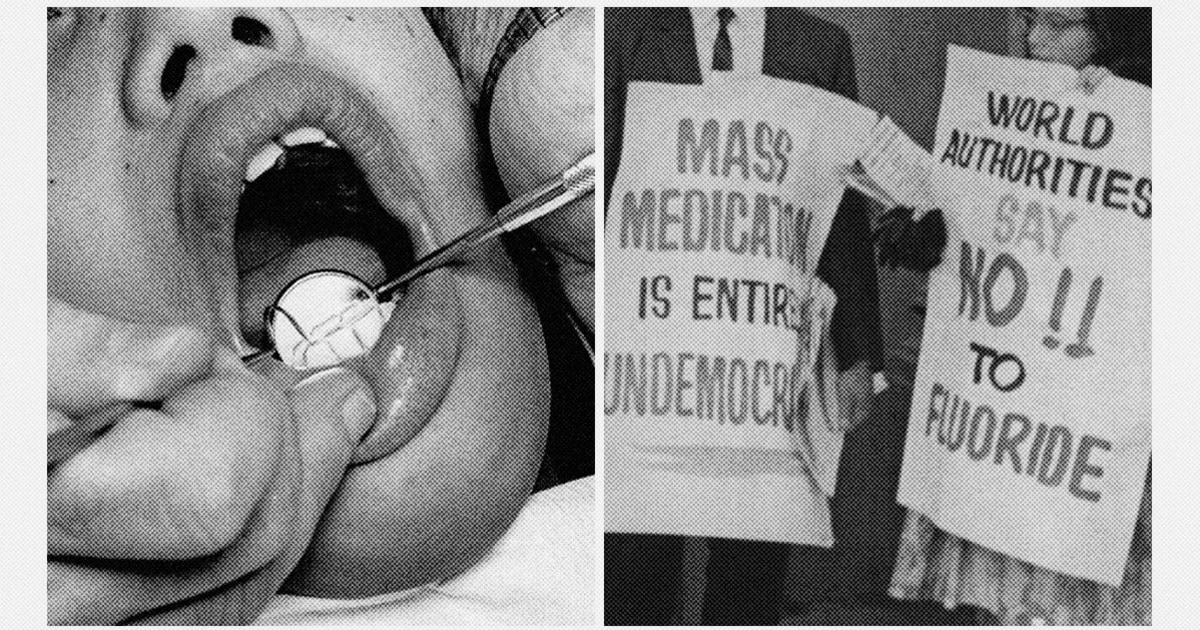- cross-posted to:
- [email protected]
- cross-posted to:
- [email protected]
Misinformation campaigns increasingly target the cavity-fighting mineral, prompting communities to reverse mandates. Dentists are enraged. Parents are caught in the middle.
The culture wars have a new target: your teeth.
Communities across the U.S. are ending public water fluoridation programs, often spurred by groups that insist that people should decide whether they want the mineral — long proven to fight cavities — added to their water supplies.
The push to flush it from water systems seems to be increasingly fueled by pandemic-related mistrust of government oversteps and misleading claims, experts say, that fluoride is harmful.
“The anti-fluoridation movement gained steam with Covid,” said Dr. Meg Lochary, a pediatric dentist in Union County, North Carolina. “We’ve seen an increase of people who either don’t want fluoride or are skeptical about it.”
There should be no question about the dental benefits of fluoride, Lochary and other experts say. Major public health groups, including the American Dental Association, the American Academy of Pediatrics and the Centers for Disease Control and Prevention, support the use of fluoridated water. All cite studies that show it reduces tooth decay by 25%.



You know what’s really useful? Not conflating “a thing that happened” with “a thing based on scientific consensus”
American Institute for Economic Research Menu How Government Prolonged the Lobotomy Vincent GelosoVincent Geloso Raymond-J-MarchRaymond J. March – August 1, 2019Reading Time: 3 minutes AIER >> Daily Economy >> History Print Friendly, PDF & EmailPrint
Ramming an icepick through someone’s eyelid to remove a part of their brain sounds like a horrifying method of torture. However, this procedure, named the lobotomy, was a common method to treat mental illness in the United States for nearly 40 years. From 1936 until 1972, nearly 60,000 people were lobotomized. Most lobotomies were performed without the patient’s or their legal caretaker’s consent.
Unsurprisingly, the procedure was a spectacular failure. After surgery, patients often found themselves paranoid, emotionally volatile, incontinent, and with severely impaired intelligence. Surgical complications often left patients unable to function independently, requiring constant supervision and caretaking. When a patient was released from the asylum after being lobotomized, they typically found themselves returning within a few months. Upon their return, they often underwent a second (or, in one case, fourth) lobotomy.
The lobotomy has been described as “one of the most spectacular failures in the history of medicine.” But unlike many historic medical practices which seem barbaric and detrimental only in hindsight, the lobotomy was scorned and dismissed by medical professionals when it became most popular. By 1941, the American Medical Association denounced the lobotomy as ineffective. Shortly after, a world-wide consensus developed along the same lines. However, the procedure continued to grow in popularity, eventually reaching a “lobotomy boom” in the mid-1940s and early-1950s.